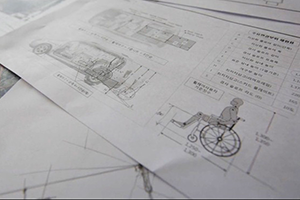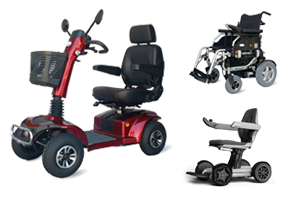5 Laws That'll Help The Titration For ADHD Industry
페이지 정보

본문
ADHD Medication Titration
Titration is a process that involves adjusting a patient's ADHD medication dose until it creates an optimal therapeutic effect. Finding the ideal balance between symptom control and side-effects can take some time.
 It is essential that doctors and patients collaborate to navigate the titration procedure effectively. Here are some suggestions to help you get started:
It is essential that doctors and patients collaborate to navigate the titration procedure effectively. Here are some suggestions to help you get started:
Dosage
ADHD medications are the cornerstone of treatment for many adults and children with attention-deficit/hyperactivity disorder. However, finding the right dosage is crucial to get the desired therapeutic effect. A high dose can cause severe adverse effects, whereas a low dose may not adequately manage symptoms. A customized medication titration may aid patients in finding the right balance.
The process of titration is to gradually increase the dosage of a drug until you reach your ideal level of effectiveness and symptom control. This process can take weeks or even months, but it's vital to ensure that you're getting the best results from your ADHD medication. It also helps avoid the development of tolerance and reduce side effects.
When titrating an ADHD medication the doctor will begin you on a very low dose to assess your response to the drug. Then, they'll gradually increase the dose based on your symptoms and the side effects. Once they've reached the highest dose they can safely administer, they'll start reducing it.
titration adhd of medications is crucial for long-acting stimulant medicines. They have a distinct mechanism of action than short-acting stimulants which means that they have to be taken more frequently to achieve their full effectiveness. It's also important to note that certain medications may interact with other drugs in different ways.
Another aspect that could influence the titration of medication is that not everyone metabolizes medications in the same manner. This what is titration adhd particularly the case with atomoxetine that is metabolized primarily by CYP2D6. Around 7%-10 percent of people are not good metabolizers, and can suffer from significant adverse effects even at very low doses.
Medication titration is a complex procedure that requires constant monitoring and open communication with your healthcare provider. However, by working together, those with ADHD can maximize their treatment plans and reduce the risk of developing tolerance to medications and abuse of substances. This is why it's important to monitor your medication usage with the CareClinic App and regularly make contact with your health professional. The app includes tools like reminders for medications, mood tracking and a symptom diary which makes it easier to track your ADHD treatment.
Symptoms
During the titration, the aim is to find the appropriate dosage of medication for your child's ADHD. The best dosage should be able to control symptoms with minimal side effects. The way medication works for each person is different, and the titration method assists doctors in finding the appropriate dosage quickly.
Stimulant drugs, such as methylphenidate or amphetamines, are effective in preventing the reuptake by the brain of dopamine transporter (and norepinephrine) to ensure that these neurotransmitters remain in synapses longer. This increases the signaling of neurons that regulate attention and impulse-control. Non-stimulant medications like atomoxetine or guanfacine increase the neurotransmitters they stimulate through other mechanisms. The titration should be conducted under the supervision of a qualified clinical professional and is best done at a time of low stress.
The most frequent indication of an elevated dose is the appearance of severe or debilitating symptoms. When these symptoms occur, they must be reported to the physician immediately. Some patients may also feel the feeling that "nothing really happens" or feel "under-stimulated." These symptoms are not the desired effects of stimulant drugs but they can be cured by decreasing the dose and/or increasing the time between doses.
Other signs of the wrong dose include increased mood lability, problems sleeping and tics such as blinking or glancing. The patient's doctor must be contacted immediately if these occur, as these could be signs of serious or life-threatening side effects.
While the titration process can take time, it is worthwhile to receive the right dose of ADHD medication for each person. Utilizing the careClinic App, individuals can record their daily doses of ADHD medication and then share this data in real-time with their clinician and therapist, allowing for an increased collaboration approach to treatment. Take the Frida ADHD self-assessment today and get a treatment plan that is customized that includes medications delivered directly to your doorstep.
Side effects
While medications are often prescribed to treat ADHD symptoms however, it's only effective when it's part and parcel of a comprehensive plan. To help people cope with their symptoms with behavioral therapy, educational support and lifestyle modifications are suggested. There is no cure for ADHD, but it can significantly improve quality of life by helping people function more effectively.
Titration is the process of finding the optimal dose to manage ADHD symptoms while minimizing the risk of side effects. It starts with a small dose and gradually increases until the doctor has found the correct dosage for each individual. In general, it takes between 8 and 12 weeks to reach the targeted dose of medication.
While titration is an extended process, it is important to work with your healthcare provider and listen to their feedback. This is because everyone reacts differently to medication and one dose may not be appropriate for all. It is also crucial to inform your doctor when you experience any severe adverse side effects during the titration process.
It is also important to know what is titration adhd you can expect during the titration. For instance, if you're taking stimulant medications during the titration adhd meds process you may experience side effects such as stomach upset, headache insomnia, headache, or increased appetite. However the majority of these side effects are only temporary and usually go away when you adjust to the medication.
These side effects are caused by the body's inability to adjust to the new medication. By gradually increasing the dosage gradually, the body will become accustomed to it. If you do not suffer any side effects, you've probably not reached the recommended dosage of the medication.
For non-stimulant medicines, such as Strattera or Qelbree you may not have to worry about any significant negative side effects. Be aware of the possible side effects that are common to these medications, and discuss the effects with your doctor.
Schedule
For adults with ADHD who are dependent on medication, understanding how to navigate the titration process is key. The goal is to find a dosage that reduces adverse effects and manages ADHD symptoms. It might take a while but it's essential to keep in touch with your doctor to ensure you receive the best result.
Titration is the method of gradually increasing the dosage of an ADHD medication until you reach your target dosage. During this period it is vital to monitor your symptoms. You should see your doctor each week to discuss any side effects and the effectiveness of the medication.
The exact timing of titration is dependent on your age, your symptoms and side effects. Children should be titrated every 15 days and not the 30 days suggested by the Food and Drug Administration. This lets doctors evaluate the medication more accurately and also get children on a dose that is effective in the shortest time possible.
A typical titration schedule begins with a small dose and gradually increases it every seven days until you reach the target dosage. This can be up to 18 mg for extended release MPH (Concerta) 10 mg for controlled release MPH (Biphentin), and 5 mg for mixed amhetamine salts XR.
While blinded trials using N=1 are one way to optimize the dosage of an ADHD medication however, they can be lengthy and haven't been confirmed to be more effective than conventional techniques for titration. Titration plans allow doctors to assess a medication's effects and benefits more precisely.
It is important to remember that the titration process for a new medication may take some time but it's worth it. Communication between you with your doctor, as well as other professionals can help you identify the best treatment for you. If you have any concerns about titration, or your specific ADHD medications, talk to your doctor or psychiatrist.
Titration is a process that involves adjusting a patient's ADHD medication dose until it creates an optimal therapeutic effect. Finding the ideal balance between symptom control and side-effects can take some time.
 It is essential that doctors and patients collaborate to navigate the titration procedure effectively. Here are some suggestions to help you get started:
It is essential that doctors and patients collaborate to navigate the titration procedure effectively. Here are some suggestions to help you get started:Dosage
ADHD medications are the cornerstone of treatment for many adults and children with attention-deficit/hyperactivity disorder. However, finding the right dosage is crucial to get the desired therapeutic effect. A high dose can cause severe adverse effects, whereas a low dose may not adequately manage symptoms. A customized medication titration may aid patients in finding the right balance.
The process of titration is to gradually increase the dosage of a drug until you reach your ideal level of effectiveness and symptom control. This process can take weeks or even months, but it's vital to ensure that you're getting the best results from your ADHD medication. It also helps avoid the development of tolerance and reduce side effects.
When titrating an ADHD medication the doctor will begin you on a very low dose to assess your response to the drug. Then, they'll gradually increase the dose based on your symptoms and the side effects. Once they've reached the highest dose they can safely administer, they'll start reducing it.
titration adhd of medications is crucial for long-acting stimulant medicines. They have a distinct mechanism of action than short-acting stimulants which means that they have to be taken more frequently to achieve their full effectiveness. It's also important to note that certain medications may interact with other drugs in different ways.
Another aspect that could influence the titration of medication is that not everyone metabolizes medications in the same manner. This what is titration adhd particularly the case with atomoxetine that is metabolized primarily by CYP2D6. Around 7%-10 percent of people are not good metabolizers, and can suffer from significant adverse effects even at very low doses.
Medication titration is a complex procedure that requires constant monitoring and open communication with your healthcare provider. However, by working together, those with ADHD can maximize their treatment plans and reduce the risk of developing tolerance to medications and abuse of substances. This is why it's important to monitor your medication usage with the CareClinic App and regularly make contact with your health professional. The app includes tools like reminders for medications, mood tracking and a symptom diary which makes it easier to track your ADHD treatment.
Symptoms
During the titration, the aim is to find the appropriate dosage of medication for your child's ADHD. The best dosage should be able to control symptoms with minimal side effects. The way medication works for each person is different, and the titration method assists doctors in finding the appropriate dosage quickly.
Stimulant drugs, such as methylphenidate or amphetamines, are effective in preventing the reuptake by the brain of dopamine transporter (and norepinephrine) to ensure that these neurotransmitters remain in synapses longer. This increases the signaling of neurons that regulate attention and impulse-control. Non-stimulant medications like atomoxetine or guanfacine increase the neurotransmitters they stimulate through other mechanisms. The titration should be conducted under the supervision of a qualified clinical professional and is best done at a time of low stress.
The most frequent indication of an elevated dose is the appearance of severe or debilitating symptoms. When these symptoms occur, they must be reported to the physician immediately. Some patients may also feel the feeling that "nothing really happens" or feel "under-stimulated." These symptoms are not the desired effects of stimulant drugs but they can be cured by decreasing the dose and/or increasing the time between doses.
Other signs of the wrong dose include increased mood lability, problems sleeping and tics such as blinking or glancing. The patient's doctor must be contacted immediately if these occur, as these could be signs of serious or life-threatening side effects.
While the titration process can take time, it is worthwhile to receive the right dose of ADHD medication for each person. Utilizing the careClinic App, individuals can record their daily doses of ADHD medication and then share this data in real-time with their clinician and therapist, allowing for an increased collaboration approach to treatment. Take the Frida ADHD self-assessment today and get a treatment plan that is customized that includes medications delivered directly to your doorstep.
Side effects
While medications are often prescribed to treat ADHD symptoms however, it's only effective when it's part and parcel of a comprehensive plan. To help people cope with their symptoms with behavioral therapy, educational support and lifestyle modifications are suggested. There is no cure for ADHD, but it can significantly improve quality of life by helping people function more effectively.
Titration is the process of finding the optimal dose to manage ADHD symptoms while minimizing the risk of side effects. It starts with a small dose and gradually increases until the doctor has found the correct dosage for each individual. In general, it takes between 8 and 12 weeks to reach the targeted dose of medication.
While titration is an extended process, it is important to work with your healthcare provider and listen to their feedback. This is because everyone reacts differently to medication and one dose may not be appropriate for all. It is also crucial to inform your doctor when you experience any severe adverse side effects during the titration process.
It is also important to know what is titration adhd you can expect during the titration. For instance, if you're taking stimulant medications during the titration adhd meds process you may experience side effects such as stomach upset, headache insomnia, headache, or increased appetite. However the majority of these side effects are only temporary and usually go away when you adjust to the medication.
These side effects are caused by the body's inability to adjust to the new medication. By gradually increasing the dosage gradually, the body will become accustomed to it. If you do not suffer any side effects, you've probably not reached the recommended dosage of the medication.
For non-stimulant medicines, such as Strattera or Qelbree you may not have to worry about any significant negative side effects. Be aware of the possible side effects that are common to these medications, and discuss the effects with your doctor.
Schedule
For adults with ADHD who are dependent on medication, understanding how to navigate the titration process is key. The goal is to find a dosage that reduces adverse effects and manages ADHD symptoms. It might take a while but it's essential to keep in touch with your doctor to ensure you receive the best result.
Titration is the method of gradually increasing the dosage of an ADHD medication until you reach your target dosage. During this period it is vital to monitor your symptoms. You should see your doctor each week to discuss any side effects and the effectiveness of the medication.
The exact timing of titration is dependent on your age, your symptoms and side effects. Children should be titrated every 15 days and not the 30 days suggested by the Food and Drug Administration. This lets doctors evaluate the medication more accurately and also get children on a dose that is effective in the shortest time possible.
A typical titration schedule begins with a small dose and gradually increases it every seven days until you reach the target dosage. This can be up to 18 mg for extended release MPH (Concerta) 10 mg for controlled release MPH (Biphentin), and 5 mg for mixed amhetamine salts XR.
While blinded trials using N=1 are one way to optimize the dosage of an ADHD medication however, they can be lengthy and haven't been confirmed to be more effective than conventional techniques for titration. Titration plans allow doctors to assess a medication's effects and benefits more precisely.
It is important to remember that the titration process for a new medication may take some time but it's worth it. Communication between you with your doctor, as well as other professionals can help you identify the best treatment for you. If you have any concerns about titration, or your specific ADHD medications, talk to your doctor or psychiatrist.
- 이전글What's The Job Market For Sofa Couch L Shape Professionals? 24.09.21
- 다음글Guide To Car Key Spares: The Intermediate Guide For Car Key Spares 24.09.21
댓글목록
등록된 댓글이 없습니다.





